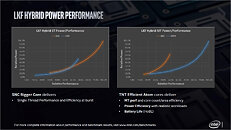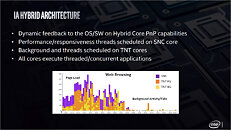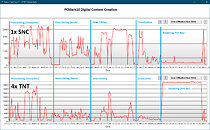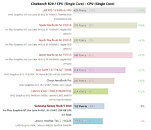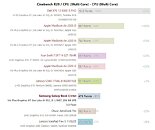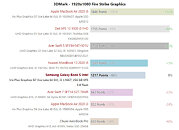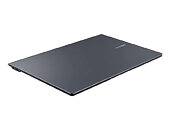
Windows 10 Scheduler Aware of "Lakefield" Hybrid Topologies, Benchmarked
A performance review of the Intel Core i5-L16G7 "Lakefield" Hybrid processor (powering a Samsung Galaxy S notebook) was recently published by Golem.de, which provides an in-depth look at Intel's ambitious new processor design that sets in motion the two new philosophies Intel will build its future processors on - packaging modularity provided by innovative new chip packaging technologies such as Foveros; and Hybrid processing, where there are two sets of CPU cores with vastly different microarchitectures and significantly different performance/Watt curves that let the processor respond to different kinds of workloads while keeping power-draw low. This concept was commercially proliferated first by Arm, with its big.LITTLE topology that took to the market around 2013. The "Lakefield" i5-L16G7 combines a high-performance "Sunny Cove" CPU core with four smaller "Tremont" cores, and Gen11 iGPU.
The Golem.de report reveals that Windows 10 thread scheduler is aware of the hybrid multi-core topology of "Lakefield," and that it is able to classify workloads at a very advanced level so the right kind of core is in use at any given time. The "Sunny Cove" core is called upon when interactive vast serial processing loads are in demand. This could even be something like launching applications, new tabs in a multi-process web-browser, or less-parallelized media encoding. The four "Tremont" cores keep the machine "cruising," handling much of the operational workload of an application, and is also better tuned to cope with highly parallelized workloads. This is similar to a hybrid automobile, where the combustion engine provides tractive effort from 0 kph, while the electric motor sustains a cruising speed.
The Golem.de report reveals that Windows 10 thread scheduler is aware of the hybrid multi-core topology of "Lakefield," and that it is able to classify workloads at a very advanced level so the right kind of core is in use at any given time. The "Sunny Cove" core is called upon when interactive vast serial processing loads are in demand. This could even be something like launching applications, new tabs in a multi-process web-browser, or less-parallelized media encoding. The four "Tremont" cores keep the machine "cruising," handling much of the operational workload of an application, and is also better tuned to cope with highly parallelized workloads. This is similar to a hybrid automobile, where the combustion engine provides tractive effort from 0 kph, while the electric motor sustains a cruising speed.
